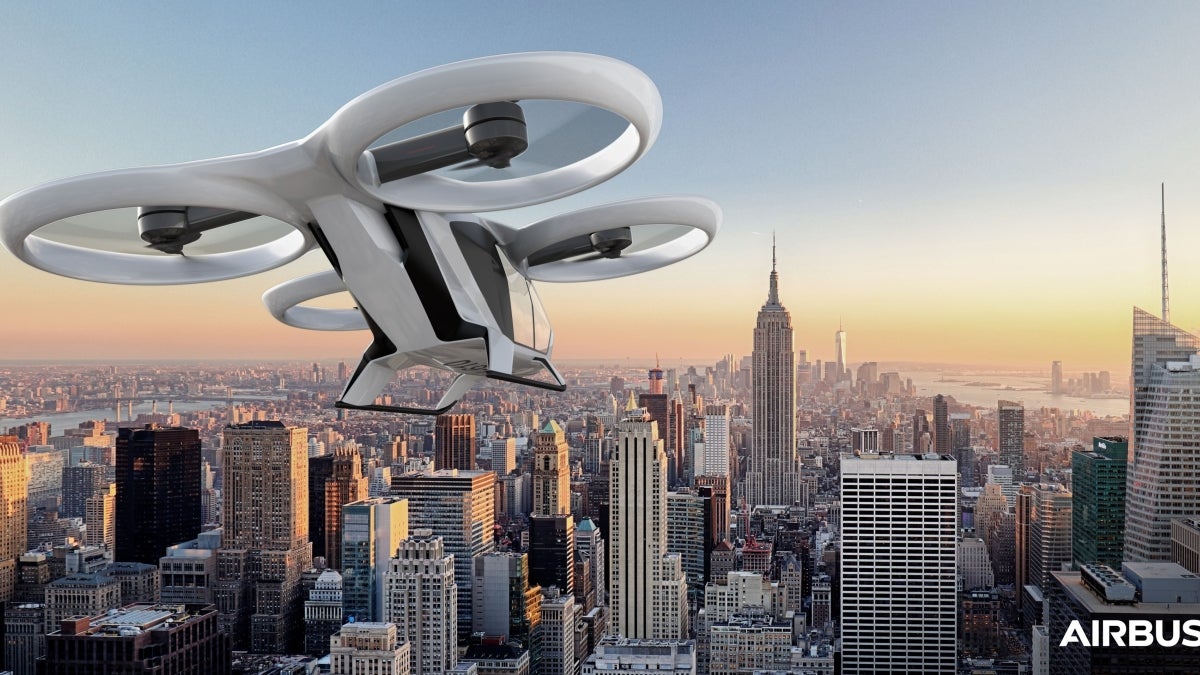People of a certain age who grew up watching a certain cartoon dad have been voicing a question since the turn of the millennium.
The answer they were hoping for is finally here: Yes, George Jetson fans, you will be getting your flying car.
But first Dan Bliss has some work to do. You don’t want your flying car succumbing to GPS confusion or running into something — especially the ground.
The Arizona State University engineer is designing a navigation and positioning system for European aeronautical giant Airbus. The company is one of about a dozen working on air vehicles.
Yes, they’re finally here. And they’re not like those awful car-plane combinations you see on Youtube. Officially, they probably won’t be called flying cars. The industry lingo now is urban aerial mobility technology.
“It doesn’t look like what we thought it would look like,” said Bliss, an associate professor in the SchoolPart of the Ira A. Fulton Schools of Engineering of Electrical, Computer and Energy Engineering.
The Airbus CityAirbus looks like a quadcopter drone sized for people. Designed as a taxi, its first unmanned flight is scheduled for the end of the year, with manned flights following in 2019.
Scaling up a quadcopter creates a viable system. Mix that with self-driving car tech, and you now have a self-flying car.
However, unlike cars, where you can install a few self-driving features at a time (lane correction, backup cameras, self-parking), a self-flying plane has to be fully autonomous from the very beginning.
In some ways, it’s easier than a car. Cars operate in very complicated environments. Once a plane is off the ground, it’s simpler.
“The downside is the failure modes are much worse, of course,” Bliss said. “You have to figure out how to deal with that. ... Specifically, we’re interested in making sure they know where they are. We use multiple technologies to do that.”
GPS is easily confused. In a car, that’s a problem. In a plane, that’s a disaster.
“You really want to fuse that with other technologies,” Bliss said. The technologies that work in self-driving cars won’t necessarily work in a self-flying plane.
Cars rely heavily on cameras. They can be confused as well — by fog, sandstorms, or the machine learning behind the camera not understanding context the way a human would. (Two years ago a driver put his Tesla in self-driving mode in Florida. A plain, white 18-wheeler was crossing the highway. The car “thought” the truck was part of the bright sky and rammed it, killing its driver.)
Scanning lasers — those spinning things you see on top of self-driving cars — are not scalable. Radar is great, and less likely to be confused, but it can only see that something is there, not what that something is.
Bliss’ approach? Build a ground-based positioning system more sophisticated than GPS, and intertwine it with existing systems.
“That’s the approach we’re taking,” he said. “We’re assuming we’ll have some set of these ground stations.”
Far away, GPS will suffice. “But as soon as it gets close to anything interesting, you want to transition to other positioning techniques that are more robust,” Bliss said. “The downside here is really bad, so you want to have multiple modalities.”
Here are the different technologies Bliss is combining:
• Radio frequency convergence — By using the same radio frequency to do more, it can simultaneously communicate and estimate position.
• Distributed coherence — In order to get a completely precise location, systems lock their clocks remotely in a precise way. How precise? One part per billion.
• Multiple antennae systems — With antennae on the ground and on the vehicle, “that allows us not only to get very, very precise positioning, but it allows us to get angular information about the attitude of the platform, and where the platform is on the angle.”
While the project is in the technology development phase, it is already showing preliminary proof of concept. Bliss credits his team in the Center for Wireless Information Systems and Computational Architectures at ASU, which includes professor Chaitali Chakrabarti, research professor Hyunseok Lee, and seven graduate students.
Flying cars are on the way. Maybe they'll become dubbed “Jetsons.”
Top image courtesy of Airbus.
More Science and technology

ASU postdoctoral researcher leads initiative to support graduate student mental health
Olivia Davis had firsthand experience with anxiety and OCD before she entered grad school. Then, during the pandemic and as a result of the growing pressures of the graduate school environment, she…

ASU graduate student researching interplay between family dynamics, ADHD
The symptoms of attention deficit hyperactivity disorder (ADHD) — which include daydreaming, making careless mistakes or taking risks, having a hard time resisting temptation, difficulty getting…

Will this antibiotic work? ASU scientists develop rapid bacterial tests
Bacteria multiply at an astonishing rate, sometimes doubling in number in under four minutes. Imagine a doctor faced with a patient showing severe signs of infection. As they sift through test…
